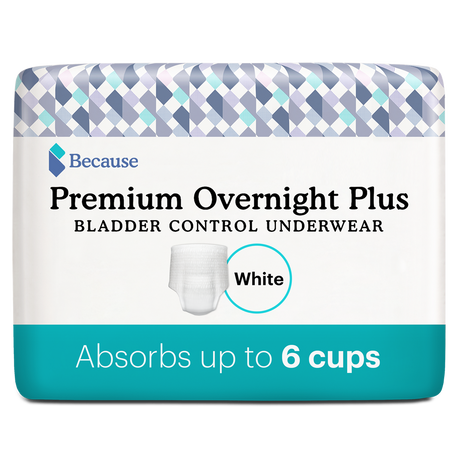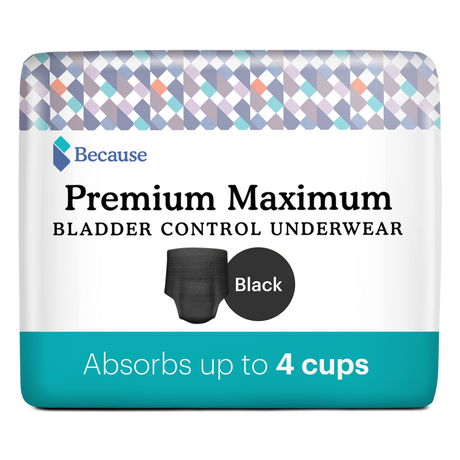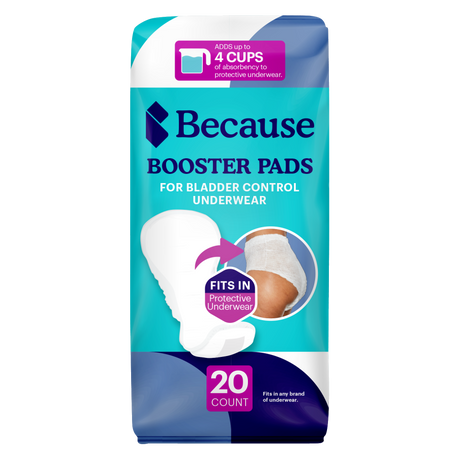An estimated 25 to 33% of adults in the United States suffer from urinary incontinence, and 7 to 15% have bowel incontinence. Over the last two decades, science has made advancements that provide patients with new treatment options like Botox injections for incontinence. Sacral nerve stimulation is another one of these new treatment options.
Understanding Sacral nerve stimulation and how it works can help you decide whether to ask your doctor about the treatment.
What Is Sacral Nerve Stimulation?
Sacral nerve stimulation is a medical procedure used to treat some types of urinary incontinence and bowel incontinence. It involves implanting a small device in the lower back that delivers electrical stimulation to the critical nerves in this area. When successful, SNS can improve bladder and bowel control for people with urinary or bowel incontinence.
What Does Sacral Nerve Stimulation Do?
Sacral nerve stimulation therapy activates the sacral nerves. These nerves start in the lower back and run through the pelvis, back of the thigh, lower leg, and feet. Your sacral nerves control sensation and muscle function in these areas.
Stimulating the sacral nerves can help people with incontinence in a few ways. First, these nerves control the pelvic floor muscles that support the bladder and bowels. Stimulating them may help improve muscle function so that leaks and accidents are less likely to occur.
The sacral nerves also tell you when to urinate or defecate. Stimulating these nerves may improve the effectiveness of your body’s natural messaging system. As a result, your brain may better receive and interpret messages from your bowel or bladder.
These nerves control the bowel and bladder muscles, plus the urethral sphincter (the muscle that regulates the flow of urine out of the body). Sacral nerve stimulation may help the bowel, bladder, and urethra reduce incontinence symptoms.
How Does a Sacral Nerve Stimulator Work?

A sacral nerve stimulator is roughly the size of a stopwatch. It delivers mild electrical impulses directly to the sacral nerves. Today, most sacral nerve stimulators pair with mobile devices via Bluetooth. This innovation has greatly simplified the use of SNS, allowing patients and medical providers to monitor battery life and performance in real-time.
Who Is a Good Candidate for Sacral Neuromodulation?
A good candidate for sacral neuromodulation typically has one of the following conditions:
- Overactive bladder (OAB)
- Urge urinary or bowel incontinence
- Non-obstructive urinary retention
- Chronic bowel incontinence
SNS isn’t a suitable treatment for all bladder and bowel problems. Unfortunately, sacral nerve stimulation generally isn’t beneficial for people with stress incontinence — one of the most common types in women. It also isn’t an effective treatment for urinary frequency caused by an enlarged prostate. People with incontinence due to an underlying medical condition like multiple sclerosis generally aren’t good candidates for SNS.
In addition to having one of the above diagnoses, you typically need to be:
- Suffering from symptoms severe enough to reduce your quality of life
- Physically and mentally able to use a mobile app or remote control to operate the sacral nerve stimulator
- Physically healthy enough to undergo surgical procedures
- Free from scarring in the lower urinary tract
- Not pregnant and not planning to become pregnant
- Age 16 or older, as the procedure is not suitable for children
Before doctors consider SNS treatment, you’ll usually have to try to control overactive bladder symptoms or urge incontinence with first-line and second-line standard medical therapy interventions. These may include:
- Pelvic floor exercises
- Physical therapy
- Lifestyle changes like avoiding foods that cause bladder inflammation
- Incontinence medications approved by the U.S. Food and Drug Administration (FDA)
Typically, doctors won’t recommend SNS unless other treatments fail to relieve symptoms. People who cannot benefit from or try other treatments are the exception. For example, someone unable to take medications for incontinence due to the potential for drug interactions may only need to try exercise, physical therapy, and lifestyle changes before doctors are willing to use SNS to treat fecal or urinary incontinence.
What to Expect if You Have the Procedure

The SNS procedure has four steps: evaluation, a trial period, surgery, and post-surgical treatment.
Evaluation
The first step in the process is to be evaluated by a specialist who performs SNS procedures. Sometimes, this may be the doctor you already see for urinary or bowel incontinence. Other times, you may need to see a different specialist.
During your evaluation appointment, the doctor will review your medical history and ask you questions about your familiarity with mobile apps to determine if you’ll be able to use the controls. They’ll usually do a physical examination as well. In some cases, doctors may order imaging tests to double-check your original diagnosis or bloodwork to get a picture of your overall health.
The evaluation appointment may also include a discussion about the costs of the procedure. Medicare will cover sacral nerve stimulation for urinary and fecal incontinence, but only when patients meet specific criteria. Medicaid may also provide coverage for SNS, but rules vary by state. Many private health insurance plans will pay for all or some of the cost of SNS. However, specifics will vary. If you’re a Medicaid subscriber or have private health insurance, contact your insurance company for more coverage information.
Trial Period
Before inserting the sacral nerve stimulator, your doctor will want to run a trial to see if nerve stimulation helps with your symptoms. The doctor may make a small incision to insert a temporary wire or inject a tined electrode lead. In both cases, you’ll receive a local anesthetic to reduce pain. Doctors typically use an x-ray machine to guide them as they place the lead or tine.
After the lead or wire is in place, an external stimulator is connected. This device works similarly to the permanent stimulator implanted during SNS surgery, but it goes outside your body rather than inside.
During the trial, your doctor will ask you to keep a symptom diary. You’ll record what incontinence symptoms you experience, when they happen, and how severe they are.
In some cases, you can return to work and your everyday activities during the trial period. However, your doctor may advise you to limit how much you bend and stretch and to avoid lifting heavy objects. Because the stimulator must stay dry, you’ll likely need to take sponge baths rather than bathing or showering until the trial ends.
Often, the SNS test phase lasts for one to two weeks, but yours may be longer or shorter. At the end of the trial period, you’ll see the specialist again and discuss your experience. If you observed positive results from the trial, your medical provider would likely recommend the procedure. Doctors typically define positive results as seeing at least a 50% reduction in symptoms.
Surgery
In most cases, SNS implantation surgery takes place in an outpatient surgical center rather than the operating room of a traditional hospital. Usually, SNS is an outpatient procedure, but you may need to have a friend or family member accompany you to drive you home after the surgery.
You may be asked not to eat or drink anything hours before your surgery. Your doctor will provide you with specific instructions regarding how to prepare for the procedure.
At the beginning of the procedure, you’ll receive either general or local anesthesia. Then, the doctor will make a small incision about 2 to 3 inches in length in your skin. The surgeon will insert the device above your buttocks in your lower back. The surgery usually takes around 20 to 30 minutes, but you’ll likely stay at the surgical center for a couple of hours.
Post-Surgery
You may have tenderness or pain around the incision site for a few days after the surgical procedure. Some people report feeling odd sensations along the pelvic nerves, but the sacral nerve stimulator shouldn’t be painful.
If you feel any tingling or other sensations, they’ll probably subside once your body becomes accustomed to the device. This process usually takes a few weeks.
Your doctor may advise you to rest for 1-2 days after the surgery and only participating in light activities for 3 to 6 weeks post-op. After that, you can return to your daily activities. Because the device and lead wires are now under your skin, you can shower and bathe. It’s a good idea to continue to wear incontinence underwear or pads while you wait to see what the effect of stimulation is on your symptoms.
After the initial recovery period, your doctor will likely want you to attend regular follow-up appointments to check your progress. During these appointments, your medical provider may adjust the sacral nerve stimulator as needed.
How Long Does Sacral Nerve Stimulation Last?
Sacral nerve stimulator devices don’t last forever, and their lifespan varies. The newest devices have rechargeable batteries and last for around 15 years. Older devices usually last for three to five years. When a stimulator reaches the end of its lifespan, you’ll need to undergo surgery again to remove the device and replace it with a new one.
How Successful Is Sacral Nerve Stimulation?
Numerous studies show that sacral nerve stimulation offers lasting benefits for people with incontinence. A retrospective study of 106 patients who underwent long-term stimulation found significant evidence that SNS controlled nerve-related pelvic floor dysfunction symptoms.
Another evaluation of earlier studies concluded that most people with nerve-related fecal incontinence benefited from the procedure. The Mayo Clinic estimates that 70 to 85 percent of patients get relief from urinary incontinence symptoms from SNS based on the long-term outcomes of procedures.
If you’re considering SNS, it’s essential to understand the procedure may not eliminate incontinence symptoms. You may still need daily or overnight incontinence products to protect yourself from leaks and accidents. In addition, your medical provider may have you continue with other treatments like taking medication or attending physical therapy.
Does Sacral Nerve Stimulation Have Side Effects?
Although sacral nerve stimulation can be beneficial, there are some risks involved. The neurotransmitter in the device could malfunction, making it necessary to undergo surgery again. A malfunctioning device could also cause pain. The device may also shift out of place or cause skin changes near the incision. As with all surgical procedures, there is a risk of infection.
Fortunately, adverse events from SNS are usually mild. The most common side effect is experiencing tingling or mild burning, which resolves within a few weeks.
Like pacemaker devices, sacral nerve stimulators can set off metal detectors in public places. Your doctor will give you a card that you can present to security guards to explain your condition. Some stimulators may also make it unsafe for you to have future magnetic resonance imaging (MRI) tests. If you have a condition requiring monitoring through regular imaging tests, your doctor will likely try to use an MRI-compatible device.
Your medical provider can help you weigh sacral nerve stimulation's potential benefits and risks, so you can decide if it’s a good option for you.
Does your loved one struggle with incontinence? Take our bladder protection quiz and get a sample pack to try.
Sources:
Urology Care Foundation. (n.d.). Urinary Incontinence. https://www.urologyhealth.org/urology-a-z/u/urinary-incontinence
National Institute of Diabetes and Digestive and Kidney Diseases. (n.d.). Bowel Control Problems (Fecal Incontinence). https://www.niddk.nih.gov/health-information/digestive-diseases/bowel-control-problems-fecal-incontinence/definition-factsDai, M., Lin, H., Fu, J., Liao, Z., Zhang, Y., Wu, W., ... & Su, Z. (2021). Association between urinary incontinence and multimorbidity in older adults: a cross-sectional study. Aging Clinical and Experimental Research, 33(12), 2997-3003. https://www.ncbi.nlm.nih.gov/pmc/articles/PMC8748304/
Mayo Clinic Health System. (n.d.). Nerve Stimulation to Treat Urinary Incontinence. https://www.mayoclinichealthsystem.org/hometown-health/speaking-of-health/nerve-stimulation-to-treat-urinary-incontinence









